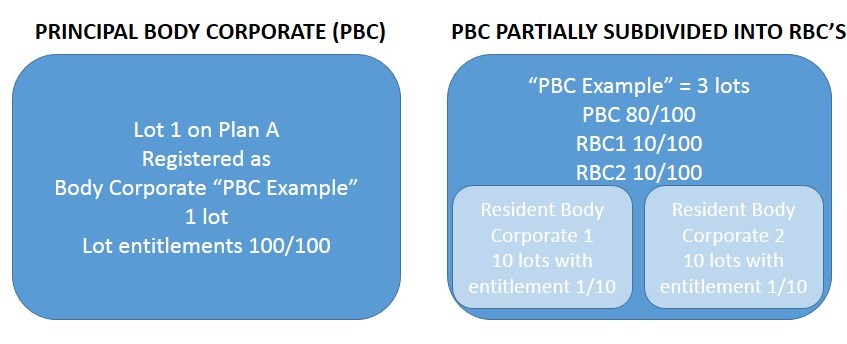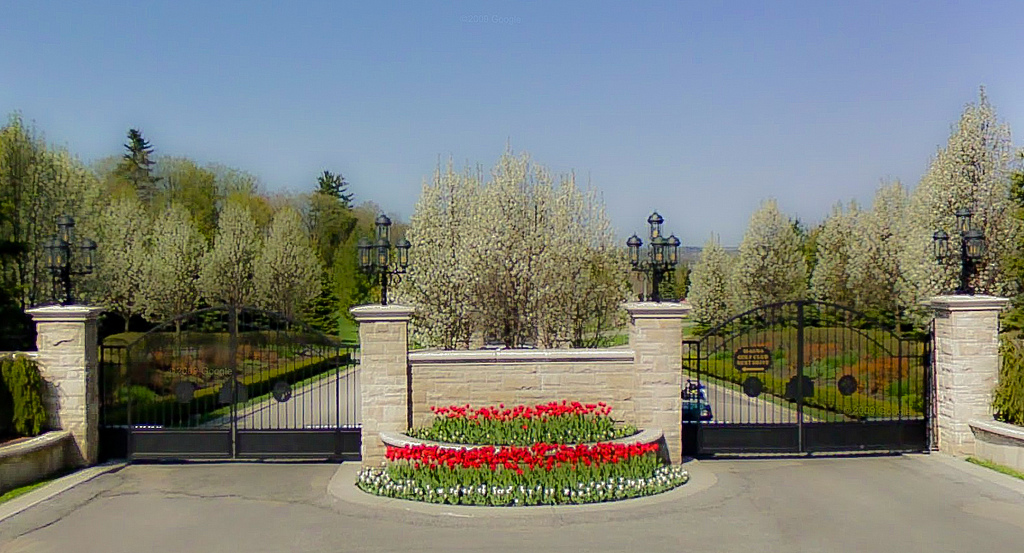A body corporate layered scheme is, well, exactly what it says; there are layers of body corporates, one contained within the other. They’re precincts of several different body corporates all with joint infrastructure.
The over riding principal of all body corporate legislations is fairness; fairness with cost allocations and fairness with use of common property. Layered schemes are created to manage this process when there are multiple relationships that will need to be considered.
The idea is all the lot owners pay for things that affect all the lot owners, and yet each individual body corporate is still autonomous within itself.
Sounds complicated? Yeah, that’s because it really is.
Layered schemes are reasonably common though, so if this affects you, it’s worth getting a handle on it.
How A Body Corporate Layered Scheme Is Created
To create a body corporate layered scheme the developer will find and if necessary, consolidate large blocks of land into one cohesive whole, and register that block as a a body corporate. It becomes the Principal Body Corporate (PBC) and will contain all the land to be developed into lots and common property.
At that point lot entitlements are set.
The development then proceeds in stages with precincts being marked out within the wider PBC to be developed and sub-divided.
Those developments are then registered as separate resident body corporates and the lots contained within those body corporates are then included in the PBC. The diagram below gives you an idea of what it will look like.

Layered Schemes vs Building Management Statements
With layered schemes the body corporates are all contained within one overriding body corporate, or several nested ones even, with the key point being they are contained within one precinct.
A group of lots and body corporates covered by a Building Management Statement (BMS) appears similar but it’s not.
Where a layered scheme is one lot completely contained within another lot, those body corporates covered by a BMS are actually body corporate, or lots, created from excess space within the original lot. That lot has either sold subspace or airspace which has been made into another lot.
What was one lot has now been split into two, which sounds similar to a layered scheme I know, but the distinction is whether or not the new lot has been excised from the existing lot.
With a layered scheme the new lot resides within the PBC and cannot be separated, just like all lots within their body corporates.
With a volumetric lot the new lot exists on it’s own. It exists above or below the original lot, but they are distinctly different lots sharing one space, and the necessary relationship between the two (or more) lots is managed by the BMS.
How Do I Know If My Lot Is Part Of A Layered Scheme
If a lot is contained within a body corporate the CTS number will be included on the title search.
In the case of a lot contained within a Resident Body Corporate, which is itself contained within a Principal Body Corporate, a layered scheme, two CTS numbers will show up on the title search, the CTS of the resident body corporate and the PBC.
A strata search will also tell you if the scheme is part of a layered scheme.
What It All Means To Lot Owners
If a lot in a body corporate is part of a layered scheme there are a number of implications for lot owners including;
- A lot in a resident body corporate will pay levies to the residential body corporate only
- Part of the levies paid by lot owners in resident body corporate will be paid in levies to the PBC
- The resident body corporate will have by-laws that must be observed
- The PBC will also have by-laws that must to be observed by all lot owners in resident body corporates
- The resident body corporate is a lot in the PBC and as such a representative will be eligible to vote at PBC meetings and join the PBC committee
For the most part levies will be higher in a body corporate layered scheme, mostly because they tend to be more complex.
The rules to be followed will also be more stringent, and correspondingly the scheme is likely to be neater, more uniform and better maintained as a result.
The Most Important Point – Cost Sharing
As I noted above the idea with layered schemes is each resident body corporate, or more specifically their lot owners, pays for their own needs.
Joint needs, like roadways in and out of the scheme, shared car parks, shared pools or other facilities, are available to be used by all lot owners across all the RBC’s, including the PBC, so all the lot owners share the costs.
And that right there is the key point and the most common dispute with layered schemes: what qualifies as PBC issues, hence all lot owners must contribute to the cost, and what is RBC issue, hence only those within that RBC must pay.
It’s such an important point, and a critical point for buyers trying to determine viability of a body corporate, that I discuss it in another article here.

